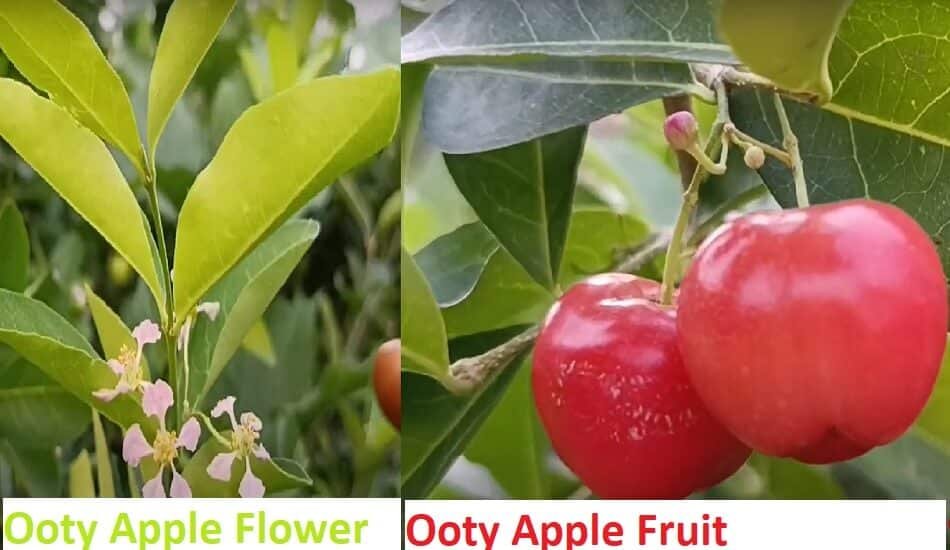Britishers settled Nilgiris and introduced the fruit, which has numerous health benefits
The Britishers settled in the Nilgiris and introduced the fruit, which is known for its numerous health benefits. Despite its suitability for the Nilgiris climate, fruit cultivation was fraught with difficulties. The Nilgiris are synonymous with the Ooty apple.
According to W. Francis, the British officer who wrote the Nilgiris Gazette, English fruit trees were introduced to the region almost as soon as the first Europeans arrived. However, no systematic record exists of the varieties that were tried or the success they achieved. However, records of the Nilgiris Agri-horticultural Society’s March 1902 meeting provide some insight into the subject. It was put together by British officials General Morgan, Sir Frederic Price, and General Baker. The first person to successfully cultivate the fruit was John Davison, a gardener trained at Kew in England. He was also said to have introduced pippin, which is now widely grown and well-adapted to the hills.
A ‘handsome’ fruit
“The fruit of this is a handsome apple that frequently weighs more than a pound and ranges in color from yellow streaked with red to brilliant scarlet. Grafted onto crab stock, it thrives and bears heavily in environments above 5,000 feet in elevation. Francis writes about apples and the import and cultivation of other fruits, stating that they are best grown in bush form.
According to M. Narasimham, former Head of the Department of Botany at Madras Christian College, exotic species account for almost 30 percent of the Nilgiris’ flora. “The British introduced fruits and other plants for their requirements,” he stated.
Also Read | God’s Crown Fruit, popularity in India for its medicinal prosperities
Frost did not settle in places like Coonoor, Kateri, Kotagiri, the slopes around Kalhatti, and the higher parts of Ootacamund, making them ideal for apple cultivation. General Baker of Tudor Hall and General Morgan of Snowdon raised excellent varieties. The Badagas also planted many patches of pippin in these areas.
Threat from pests
However, the orchards faced a significant threat from the American aphid, an insect that affected not only the branches but also the roots. The pest killed the entire orchard.
However, the orchards faced a significant threat from the American aphid, an insect that affected not only the branches but also the roots. The pest killed the entire orchard. There was no cure, so the entire tree affected by the insects was to be burned. Francis claims that the pest spreads easily through the clothes of coolies working among the trees, Sambhar, grafts from infected trees, and even fruits that are traded. The situation discouraged many people from planting the tree. One of the reasons for the pest’s spread was the failure to disinfect the plants after they were brought from England. Fresh stocks from Australia were then obtained, along with certificates proving that the plants had been disinfected with hydrocyanic acid gas for a small fee.
Another disease that afflicted the orchards was canker, which “generally starts at the collar and is usually caused by excess manure, the roots getting down into a cold subsoil, or the bark being injured by the careless use of mamuti (a garden implement) when weeding. “It was checked by cutting out the diseased part and painting the wound with grafting wax or regular oil paint,” writes Francis.
Australian apples thrived at Downham, with the best varieties being Margil, Devonshire Quarrenden, Adams Pearmain, and Ecklinvile Seedling. The trees, which are dormant from December to the end of February, are pruned and winter-sprayed in January. They ripen during July and August. According to Francis, the trees required root pruning more frequently than in England, and summer pinching or stopping during july because of the climate.
According to Francis, pears matched apples, but took longer to bear fruit. Francis claims that the China pear, also known as the country pear in the Nilgiris, is the best stock. Williams’ bon chrétien pear is a large pear with a strong flavour. However, like Jargonelle, another variety, it does not keep well. A pear called Keiffer or Bartlett, which was widely grown in America for canning, was introduced from Saharanpur. Louise Bonne of Jersey and Beurre Diel, both imported from Australia, showed promise at Downham.
Medlars performed well at Downham
Medlars thrived in Downham, and quince flourished throughout the hills. Peaches were raised from the stone.The plants were imported from England, grafted, and budded on almond or plum stock, but failed to thrive.
Also Read | Why Kerala farmers abandoning rubber in favour of rambutan, dragon fruit?
Again, good peach varieties imported from Australia—Red Shanghai, Carmen, Gros Mignon, and Emma—suited the area. Plums and apricots were the other fruits grown on the hillsides. In 1906, George Oakes and Charles Gray imported the famous Japanese flowering cherries. The Himalayan Cherry was common in Coonoor, but its fruit was highly acidic. Oakes also transported gooseberries from England. Raspberries were imported, and the red variety was readily available in Ooty, writes Francis.
Tea replaces apples
Apple orchards have gradually disappeared over the last four decades due to a combination of factors such as disease and rising labor costs. According to local historians, a gradual shift in consumer preference for fruits imported from other parts of the world broke the back of apple growers in the Nilgiris, rendering cultivation unviable. Apple and orange orchards were gradually replaced by tea plantations beginning in the 1970s and 1980s.
(With input from Rohan Premkumar.)


















Add Comment